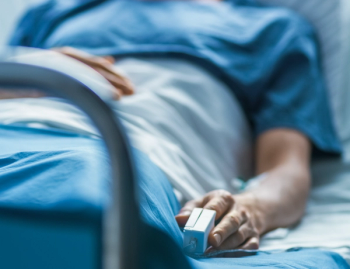
FMT Model Predicts Which Bacterial Strains Will Engraft to Recipient
Investigators develop a statistical model predicting which bacterial strains will engraft after FMT.
Fecal microbiota transplantation (FMT), recently included for the first time in
However, new
“
Investigators postulate that mechanisms pertaining to FMT efficacy focus on the gut microbiota—trillions of bacteria that reside within the gastrointestinal tract, study authors write. FMT is believed to restore these bacteria, which could potentially “alter host metabolism, inhibit pathogens, and effect changes in host immunity.”
To avoid this, study authors worked to provide a context for understanding how to develop alternative therapeutics that could “offer the therapeutic potential of FMT without the risks associated with the use of raw fecal matter,” they write.
“We describe a model focused on 3 elements, including bacterial engraftment, growth, and mechanism of action, that need to be considered when developing these live therapies targeting the gut microogranisms, or microbiome,” co-senior author of the study Eric J. Alm, who is also co-director of the Center for Microbiome Informatics and Therapeutics at the Massachusetts Institute of Technology, commented in the press release.
To create the model, the investigators assessed 20 patients with C. difficile who were treated with therapeutic FMT. In order to get a look at the gut microbiota of both donors and recipients before and after FMT for up to 4 months, they used high-resolution deep metagenomics genetic sequencing. In donors and recipients, they measured strain types and abundance of each strain and used these measurements to create the model.
Their findings? Thirty percent of the bacteria from the donor engrafted in the recipient, and the strains that were most abundant were more likely to engraft. The investigators stress the importance of their finding, in that this tells them that “if a drug only colonizes 30% of the patients you put it in, then the maximum efficacy of your drug is 30%,” according to second co-senior author Ramnik J. Xavier, MD, PhD, chief of the Division of Gastroenterology at Massachusetts General Hospital and CMIT co-director.
In addition, donor strains within a species were found to engraft in an all or nothing manner, meaning that if the donor had 3 strains of bacteria species, then all 3 of them would transfer to the recipient. Furthermore, the investigators found that there was a higher likelihood of donor strains engrafting to the recipient if the recipient already possessed some of those strains. Lastly, the investigators found that their model allowed them to predict the amount of each engrafted strain grown in the recipient.
The investigators have applied their model to other diseases, such as metabolic syndrome.
“We are in the midst of one of the largest disease therapeutics that are being developed based on a human source—bugs within us,” Dr. Xavier said in the press release. “These bugs within us, or the microbiome, are going to have a potential impact for many diseases.”
Newsletter
Stay ahead of emerging infectious disease threats with expert insights and breaking research. Subscribe now to get updates delivered straight to your inbox.

















































































































































































































































































